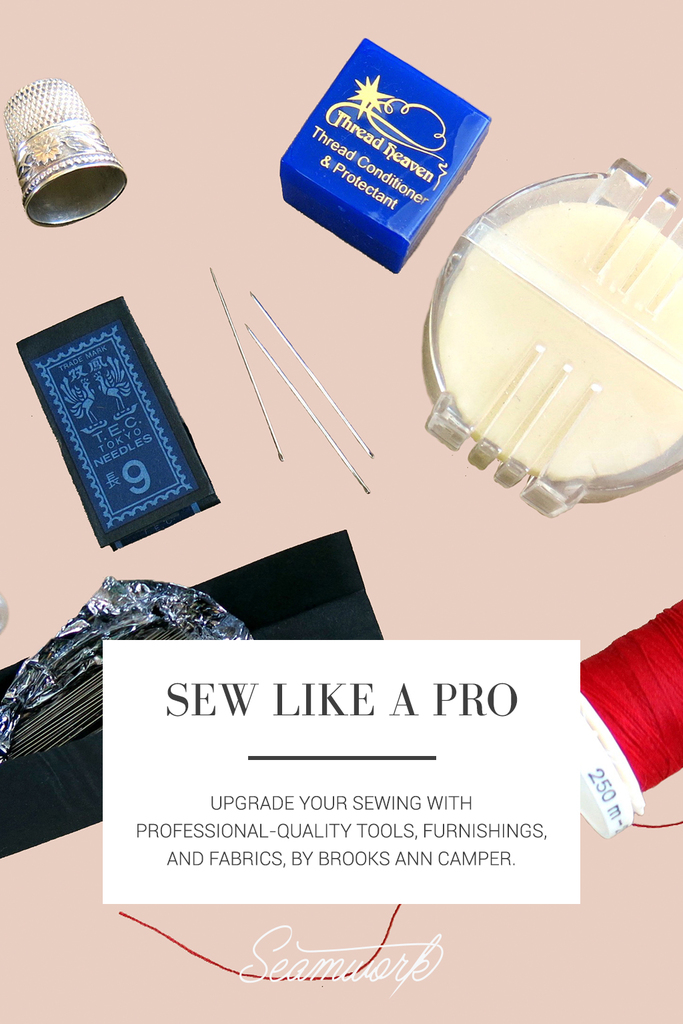We all know that practice is important, but the quickest way to elevate your sewing status might be to upgrade what you are using to create your projects. I first learned to sew as an adult while working in professional workrooms using professional tools. I believe this was one of the reasons why I was able to go from absolute beginner to sewing for Broadway in only five years.
I understand the mind-set for a beginner choosing beginner-grade tools and materials. Investing in your hobby can seem extravagant and you think you should work your way up. It also feels easier to back out, if you decide that sewing isn’t for you. But since you are reading this, I’d venture to guess you are very sew-curious or already hooked!
I want to offer a different perspective—skip the beginner stuff whenever possible. It’s only holding you back and making things harder on you! I’m pretty sure that any professional would have some of the same janky results and jaded experiences creating the same project using beginner-grade resources. A few simple upgrades could catapult the quality of your garments and the enjoyability of creating them!
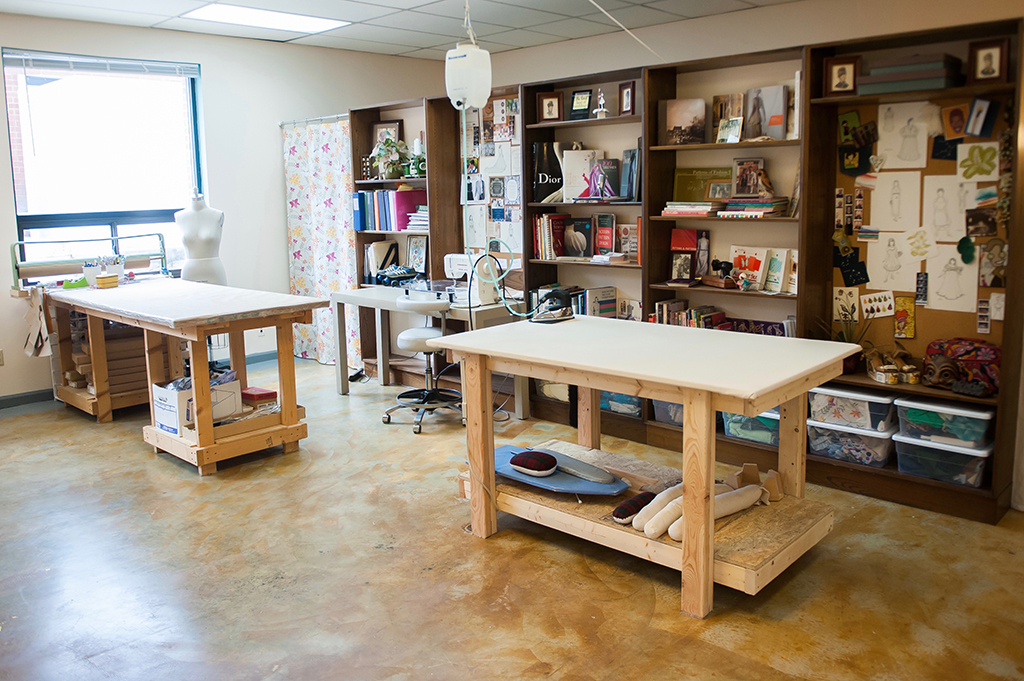
My custom dressmaking and teaching space. Photo by Shane Snider.
Over the years since going solo, I’ve been slowly growing and upgrading my own series of sewing spaces. I’m happy to share a peek into my new studio and tips about the treasures that have helped me sew like a pro!
Choose your tools for quality and purpose
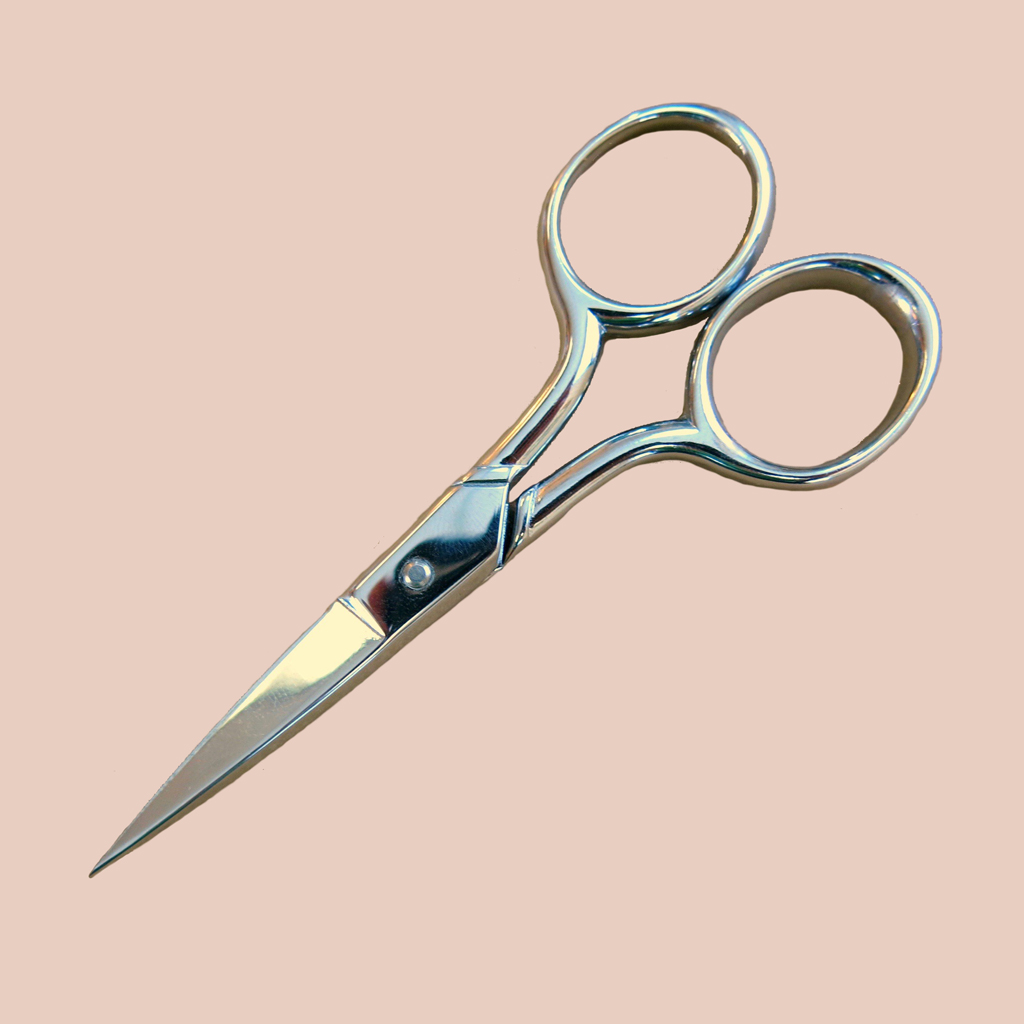
Investing in a $20 pair of snips can seem extravagant, but
I’ve enjoyed working with these for nearly 20 years!
I bet you’ve heard the advice to “buy the best you can afford," but is it really worth it?
High-quality gear will most likely be long lasting and give you the best possible results. When you aren’t satisfied with the experience or outcome of your project, you may end up criticizing your skills or doubting your abilities, when the blame is better aimed at your unsupportive supplies. Investing in quality will not only save you from repeated replacements, it can be a real confidence booster!
My philosophy is to try to choose quality tools that have multiple purposes. For example, I don’t own a seam ripper. This is certainly not because I don’t make mistakes! It’s because I’ve got a nice pair of embroidery snips that can do everything a seam ripper can do and a lot more.
Avoiding cheap single-use tools can also help reduce sewing space clutter.
Where to start?
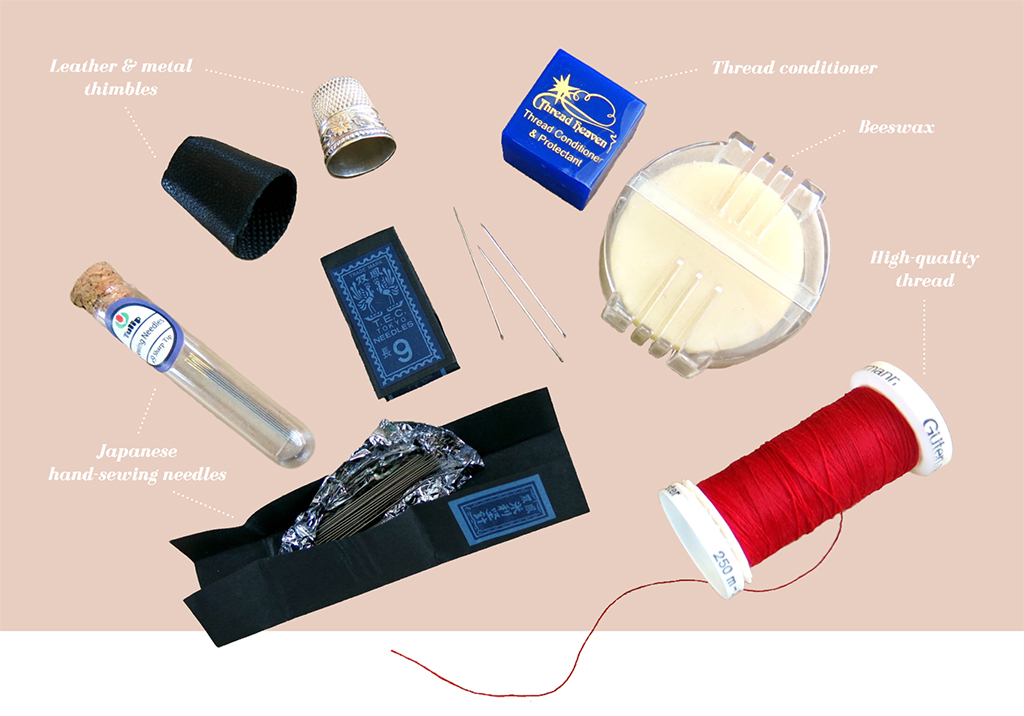
While it can be really fun to upgrade the tools for the tasks you enjoy the most, I suggest you start by adding better tools for the tasks you hate to the top of your holiday wish list.
Cringe at hand sewing? Invest in a well-fitting thimble and nice Japanese hand-sewing needles. Upgrade your thread quality and maybe try some thread conditioner. Practicing with tools like these could totally transform your hand sewing game, which could skyrocket the quality of the garments you produce!
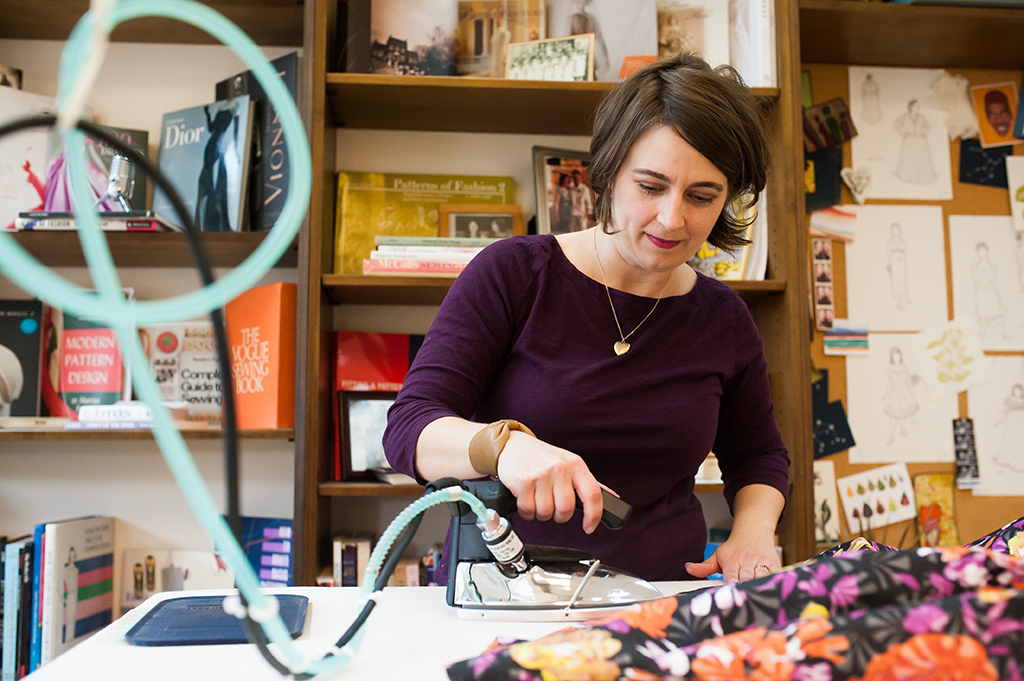
Gravity feed irons aren’t super expensive, considering a $150 investment could last for decades. Photo by Shane Snider.
Hate pressing? You might just hate using a cruddy iron! Consider an upgrade from your home iron to a gravity feed or boiler iron.
I love my gravity feed iron! This is the type of iron that was used in most of the professional shops where I worked. It needs a permanent set up, so a dedicated sewing space is a must. Gravity feed irons are quite sturdy and have an entire gallon of water to use as steam before you need to refill. Using gravity, the water drips down a long tube from a tank that hangs from your ceiling. It is boiled on demand when it hits the iron. You can get started quickly after turning it on and it produces lots of endless steam. That said, these are not meant to be used as steamers. The steam button should only be pressed in short bursts and the iron should always stay face down, which is why it comes with a metal iron rest.
You might also consider a boiler iron. Though they cost less than gravity feed irons, boiler irons still hold 5-10 times more water than an average home iron. Bonus: most boiler irons can be completely put away when not in use and can be used as a steamer. You can hold this type of iron up to garments as they are hanging and steam to your heart's content. Now that I’ve upgraded to gravity feed, this is exactly how I use my older boiler iron!
Boiler irons do have some drawbacks to consider. Since the water in the tank is boiled first and then brought up to the iron via a long hose, it takes some time to heat up and cool down. If you aren’t using it often, the water that’s been sitting in the hose can cool to form water droplets rather than steam.
Make your space work for you
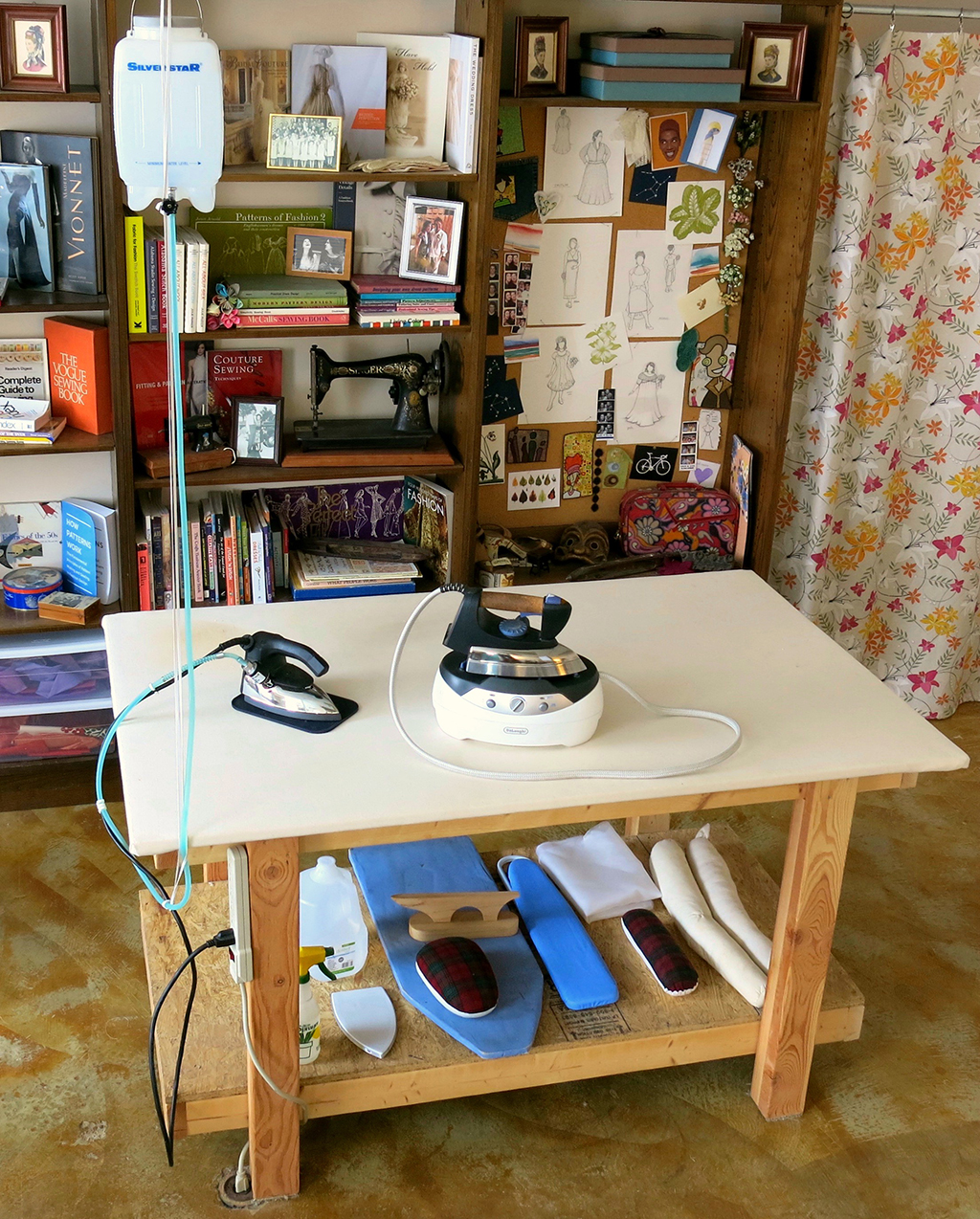
My custom ironing table, my gravity feed iron with tank (left) and boiler iron (right)
If you are upgrading your iron, you may want to upgrade your ironing board to an ironing table.
If you have a permanent sewing space, consider building a custom ironing table or adding a custom top to a piece of furniture. Plywood covered with quilt batting and canvas can be used to create a custom table that is the right size for you, what you sew, and your sewing space. When I worked in a small home sewing room, I added a custom top to a low file cabinet to maximize space in the room and gain space for pressing.
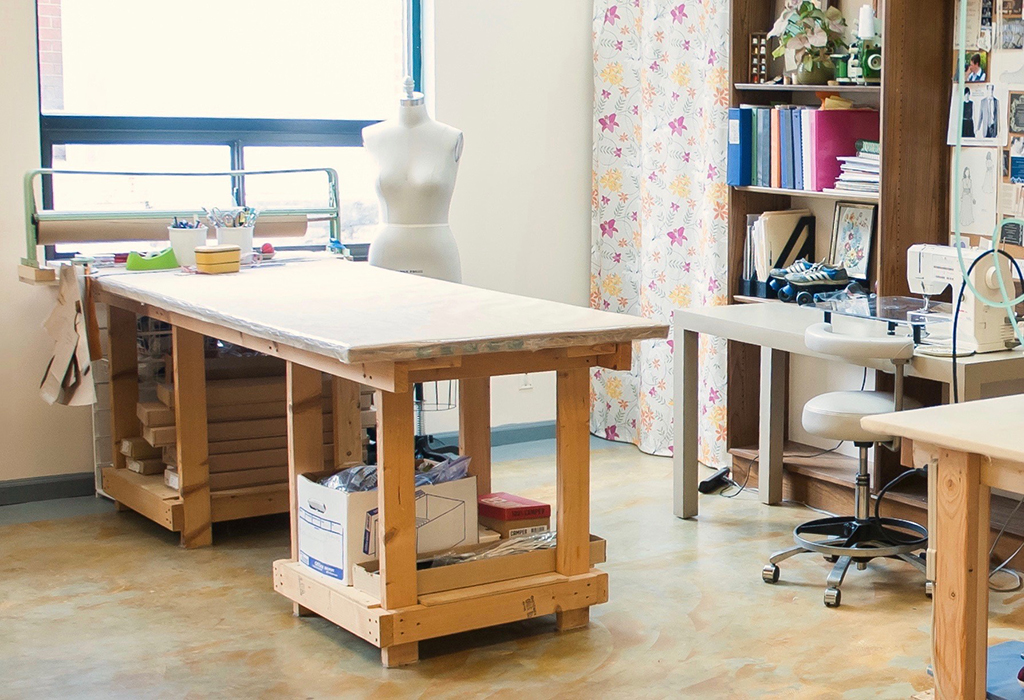
After working with these types of tables in professional costume houses, I fell madly in love. Even when my sewing space was a portion of an unconditioned garage or in a tiny apartment, I’ve always made space for this table. Photo by Shane Snider.
If you don’t have room for a permanent ironing table, consider adding a larger, more stable custom top to a sturdy ironing board base. This allows you to easily press yardage, but still tuck it away when you aren’t using it.
My professional work table top is paper-covered Homasote, which allows you to pin directly into it. I use this feature constantly while patternmaking, cutting, and sewing.
While a custom top could be added to any stable base, I made my custom tables specifically for my height. I’m less than 5’ tall, so standard heights don’t work well for my body! Just having a table the right height for you can be a great way to upgrade your sewing space and the enjoyability of the tasks you use it for.
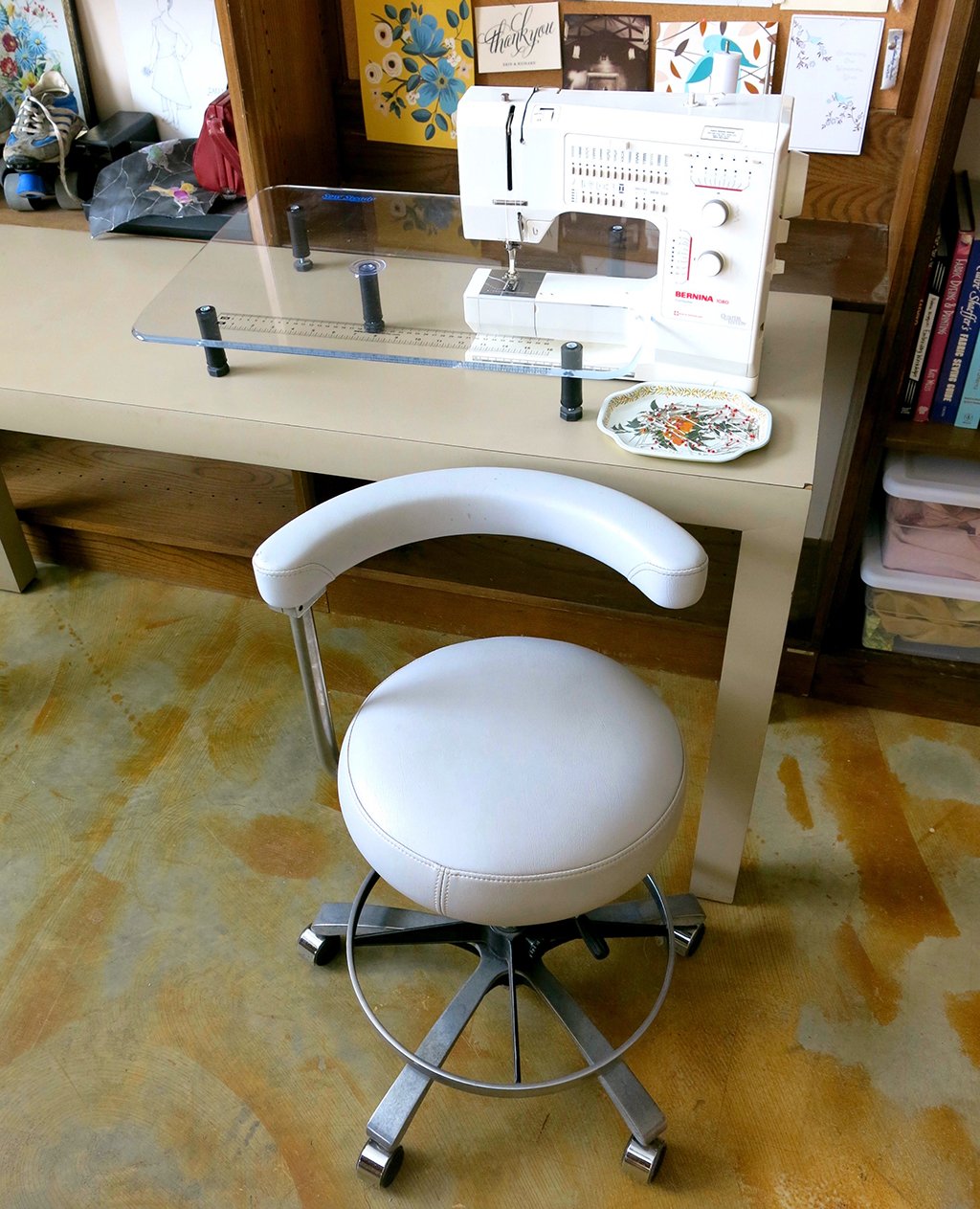
My sewing machine with extender and fancy chair.
I upgraded my chair to a “jeweler’s chair” or “dental assistant’s chair” that I found on Craigslist. It’s height adjustable and you sit with the curved arm against the front of your body. Sewing tasks often have you leaning forward and this cool chair offers some support. Time-consuming tasks can become zen instead of daunting if you’ve got a comfortable chair!
And even if you already have a sewing machine that you love, think about increasing the surface of your sewing area with a portable extension table. You’ll get instant support for your project, gaining more control and better stitch quality. I think you’ll love having a helping hand to steady your slippery stuff and balance your bulky bits!
Upgrade your fabric stash
Beginners are often encouraged to start with fabrics like quilting cottons, but I encourage everyone to start experimenting with the good stuff. Working with natural-fiber fabrics that were designed for garment sewing means that you get to do less work while producing higher-quality, longer-lasting garments. While that crafty chain store may be handy, I suggest that you step out of your comfort zone and start exploring.
Most garment fabric stores will offer swatches for a few bucks—or free. These can be very helpful in upping your sewing game! Not only do you get a chance to feel and examine the fabric, you can throw the swatch in the wash and see how it behaves. You can press your sample and maybe even practice sewing with it a bit. Whether you decide to purchase the fabric or not, you can keep the swatch in a notebook with its name, fiber content, and a list of all your discoveries about it. Pretty soon, you’ll have your own mini reference library full of various fabrics, fibers, and weaves. Skip spending time learning to get poorly-woven fabrics back on grain and start your journey into twills and tweeds!
Higher-quality fabrics are the key to producing higher-quality garments. It takes a lot more effort and skill to make a lower-quality fabrics look professional. Seamwork’s Swatch Service is a great place to start exploring!
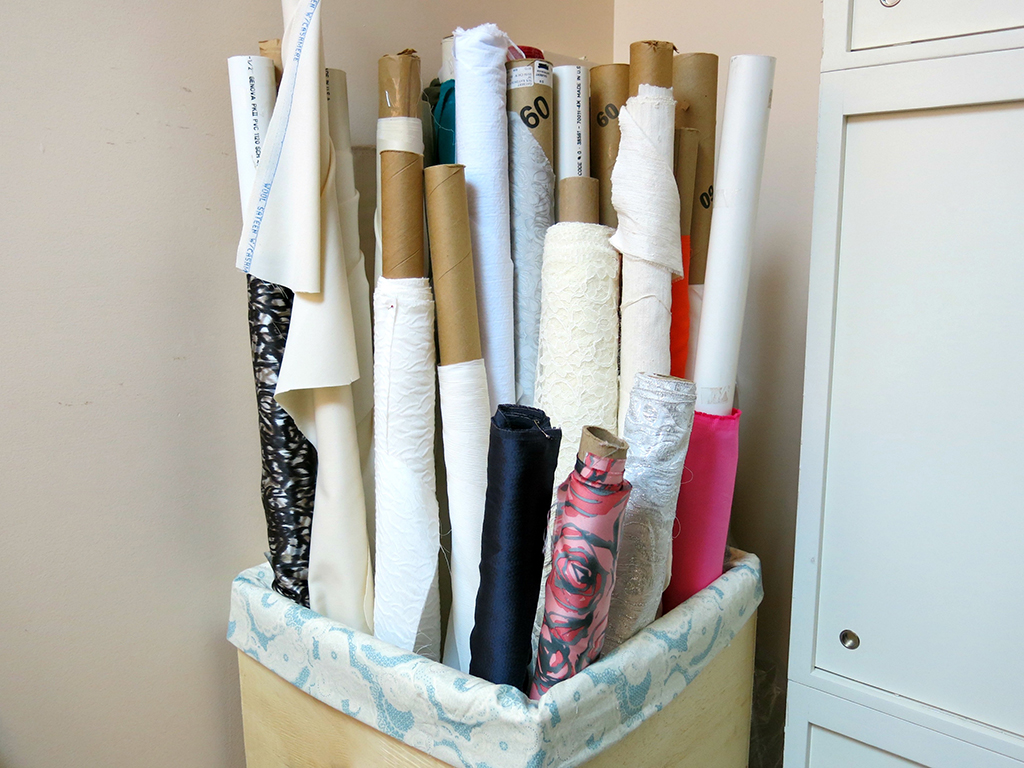
Pressing fabric onto rolls can minimize work time and creasing.
Work smarter not harder
Whether it’s better lighting or a fancy new foot for your machine, having the right gear can save you from working harder than you need to. And who wouldn’t want to spend less time struggling and more time sewing?
If you have the opportunity while growing your sewing, treat yo’ self!


